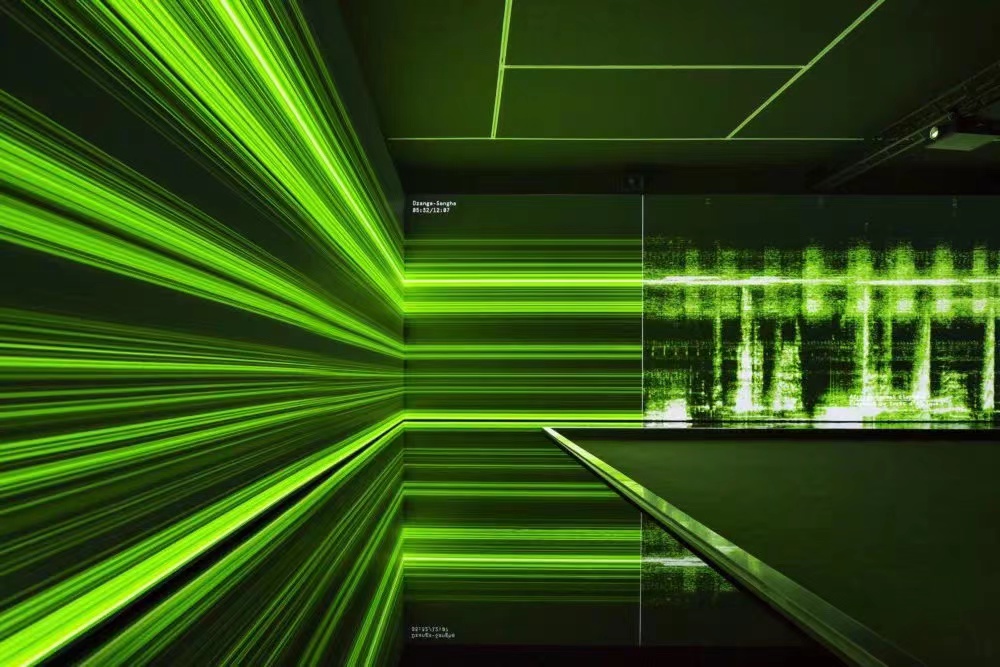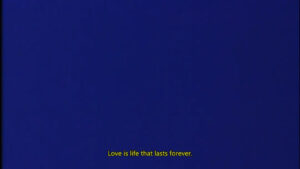Sprint3:Beyond The Visual

Vision, in terms of the senses, is a very important part of the process. People gain knowledge by reading words and understand science by seeing nature. Human civilization has also been recorded and passed on through words and images. In the concept of art, we call art forms that can be appreciated by sight visual art. The earliest testimony to art that mankind can trace is the cave paintings, which are also visual art. While visual art has a long and varied history, since the advent of contemporary art, a variety of art forms have emerged that do not rely exclusively on visual communication, such as audio art, video art, performance art, and so on. So, do artworks that focus on senses other than the visual negate the visual altogether, or do they still have a visual aesthetic? Or what is the place of the visual in these works of art that rely on other senses to express their connotations? Can we abandon the visual? Can we go beyond the visual? These are the concerns I have in Sprint 3. I will use the artwork as a case study and as my response to the sprint, the artwork I will present is “The great animal orchestra”.
https://youtu.be/btrinTDDjnQ (This is a complete collection of works)
For nearly 50 years, American soundscape ecologist, scientist and musician Bernie Krause has collected more than 5,000 hours of audio recordings of natural habitats, including more than 15,000 terrestrial and marine species from around the world. Krause discovered that the ensembles of nature are in fact very similar to the symphonies we humans create.Like our habit of reading a pentagram, the sound spectrum of the entire habitat, with some creatures’ voices always at the lowest and others clustered high, looks like the general score of a symphony, with each creature having a specific place in the orchestra where they can maintain a uniform rhythm.
As a scientist, Krause is one of the founders of the field of soundscape, a field of science that has been developed by the University of California. As a scientist, Krause was one of the main founders of the field of ‘soundscape’. He does not collect the sound of an individual creature, but the combined sound of an entire habitat. The different organisms together form the soundscape of the habitats they share, each with a unique sound. Both ‘bioacoustics’ and ‘soundscape’ are perhaps difficult for the general public to understand. Krause says that when he shifted his focus from music to science, he soon realised that simply publishing scientific papers meant that only a few people would see or hear his work. He was very dissatisfied with this. So he seized on art as a language. In his words, through art, the audience uses all their senses to experience the wonders of nature, rather than the tedium of reading a thesis. In order to present science through the language of art, the UVA (United Visual Artists) created a conversion device for the soundscapes recorded by Krauss, where they visualised the collected sounds and then made them accessible to the public through their creations. The result is the flowing soundscape we see here.
(you may watch this 9 minute video to better understand the artwork and to be able to see how it is presented.)
I still remember the shock of experiencing ‘the great animal orchestra’ in person, in a huge darkened hall at the Museum of Contemporary Art in Shanghai, where I could see a 270 degree screen surrounding me, changing the spectrum of waves and colours. The sounds of nature, birds and insects, thunderstorms, waves, fish and animals surrounded me. I could sit quietly and close my eyes to fully experience nature. It really is a perfect expression of the art of sound, I can hear its narrative and emotion, I can sense my connection to the world through my hearing.
Apart from my own subjective experience, I thought I would talk about what makes this work special. First of all, it is clearly an aural work, capable of expressing the theme of ‘environmental protection (the connection between man and nature)’ entirely through sound. In contrast to ordinary visual art, it is immersive, it is a true symphony of nature, and its artistic impact is no less than that conveyed by the visuals. It is worth noting, however, that the visual installation in this work has the attribute of being, on the one hand, not a noisy presence, but one that enhances human perception. For example, in terms of visuals, the audience is presented with different coloured scores and chapters. They choose to use cold colours to represent cold areas, and warm areas lean towards warmer colours; forest sounds are paired with green, while blue is more likely to make the audience imagine the sounds of the polar regions. (In fact, the most fundamental source of human perception of colour is also nature.) On the other hand, the presence of the visual installation enriches or completes the piece, and one is able to detect some water around the screen. This is done because there are frequencies that the human ear cannot hear, but the water patterns can tell people they are there. In other words the visual completes the possible auditory barriers.
 We don’t need to deny vision, because the existence of vision does not contradict our use of other senses, or the appearance of vision does not prevent us from understanding a work of art focussed on other senses. Many contemporary artists are trying to strengthen the sensory impact of their works, especially artists who mainly focus on visual arts, such as Damien Hearst. I think what we can do is to amplify the senses as much as possible, hoping that other senses can break through the strength of vision, establish more connections with the world through touch, smell and hearing, and think about the world to get more. Like Derek Jarman’s Blue, after blindness, he melted blue through life and death, melting the fear of death, attachment to his lover, and nostalgia for the world into a blue image. It brings the audience not only the blue color on the screen, but also the touch beyond the vision.
We don’t need to deny vision, because the existence of vision does not contradict our use of other senses, or the appearance of vision does not prevent us from understanding a work of art focussed on other senses. Many contemporary artists are trying to strengthen the sensory impact of their works, especially artists who mainly focus on visual arts, such as Damien Hearst. I think what we can do is to amplify the senses as much as possible, hoping that other senses can break through the strength of vision, establish more connections with the world through touch, smell and hearing, and think about the world to get more. Like Derek Jarman’s Blue, after blindness, he melted blue through life and death, melting the fear of death, attachment to his lover, and nostalgia for the world into a blue image. It brings the audience not only the blue color on the screen, but also the touch beyond the vision.
reference:
Bernie Krause – The Great Animal Orchestra (2021) YouTube. Available at: https://youtu.be/btrinTDDjnQ (Accessed: November 3, 2022).
Salem, MA: Interview – bernie krause & united visual artists (2021) YouTube. Available at: https://youtu.be/EWHbRZBjpCs (Accessed: November 3, 2022).




The non-visual model of contemporary art is a hot topic that has been discussed in contemporary art. This leads me to an ual’s art symposium for November 2021 – January 2023 which I think could be an extension of this. The symposium aims to provide a deeper understanding of the spatial and curatorial possibilities of such forms of participation and their potential application outside the contemporary art world. Addressing the issue that the key lies in non-visual modes of participation, the proposal is that participation for blind or visually impaired viewers should be as sophisticated as for sighted bystanders. The network will draw on disciplinary insights from cognitive science and psychology, philosophy of art, art and architectural practice, and severe disability studies.